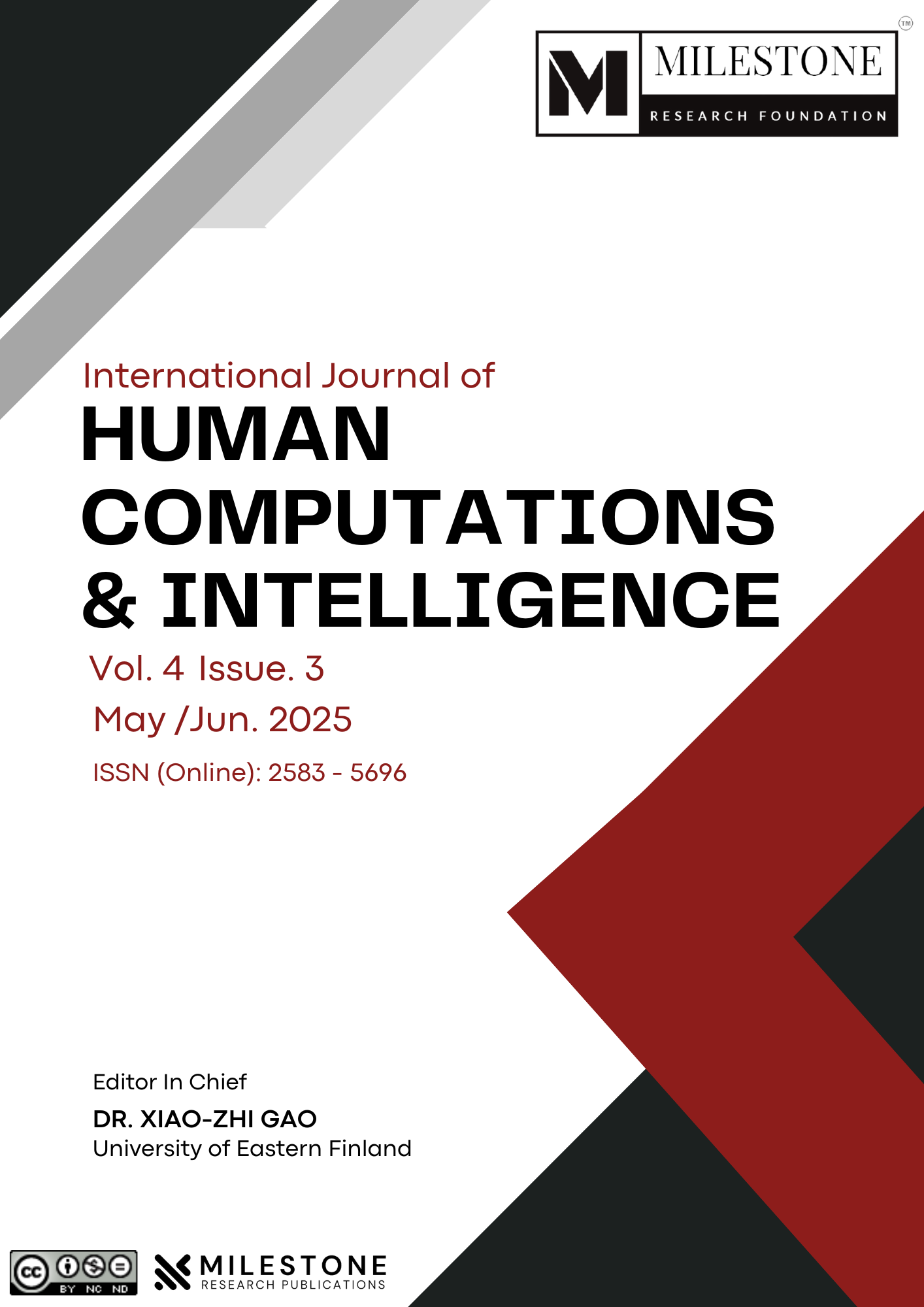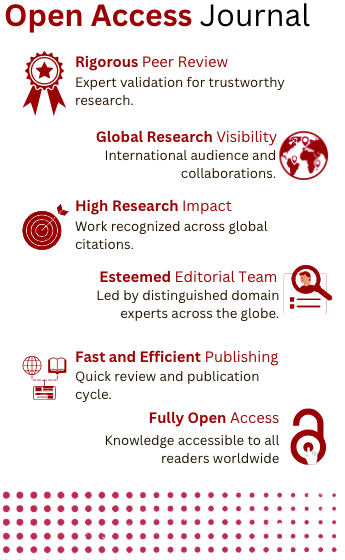Enhanced YOLOv3 Model for Automated Fabric Defect Detection
DOI:
https://doi.org/10.5281/zenodo.15280482Keywords:
Fabric defect detection, YoLo V3, deep learning, convolutional neural networks, multi-scale feature fusion, anchor box clustering, automated quality inspection, industrial defect detection, real-time object detectionAbstract
The manufacture of high-quality fabrics depends on an accurate and efficient fault detection system that can analyze data in real-time. A sophisticated defect detection system based on an enhanced YOLOv3 architecture is presented in this work to improve detection accuracy and reduce false identifications. Using a hybrid technique that combines defect size analysis and k-means clustering, the proposed approach optimizes the number and size of anchor boxes for fabric imperfections, introducing two crucial breakthroughs. Second, a multi-scale feature improvement strategy is used, combining high-level semantic insights with lower-layer spatial features. Incorporating an extra detection layer at various feature levels allows for the reliable identification of defects across multiple fabric types, including patterned and gray fabrics. Experimental verification shows that the improved model outperforms standard YOLOv3 regarding detection accuracy and dependability, achieving a defect misclassification rate below 5%. The results indicate a significant reduction in false detections, with the model performing 97.27% accuracy on gray cloth and 98.14% on lattice cloth, outperforming YOLOv3 by 2.59% and 1.91%, respectively. These findings underscore the model’s potential for industrial applications, significantly improving defect localization and fabric quality assurance.References
Xu, Y., Sun, R., Zhi, C., Liu, Z., Chen, J., Ke, Z., & Yu, L. (2025). Zero-defect manufacturing in the textile industry: A review of current advances and challenges. Textile Research Journal, 95(1–2), 194–219.
Madapudi, R. K., Ananda Rao, A., & Merugu, G. (2012). Change requests artifacts to assess impact on structural design of SDLC phases. International Journal of Computer Applications, 54(18), 21–26.
Reddy, K. U. K., Shabbiha, S., & Rudra Kumar, M. (2020). Design of high security smart health care monitoring system using IoT. International Journal, 8.
Seshakagari, H. R. B., et al. (2025). Dynamic financial sentiment analysis and market forecasting through large language models. International Journal of Human Computations & Intelligence, 4(1), 397–410.
Dasari, Y., Chebrolu, V. K., Vardhan, M. H., Kondru, S., & Pilli, V. R. (2025). Selective search based Gabor wavelet for fabric defect prediction using enhanced R-CNN. SN Computer Science, 6(4), 320.
Trigka, M., & Dritsas, E. (2025). A comprehensive survey of machine learning techniques and models for object detection. Sensors, 25(1), 214.
Gallagher, J. E., & Oughton, E. J. (2025). Surveying You Only Look Once (YOLO) multispectral object detection advancements, applications and challenges. IEEE Access.
Chen, C., Zhou, Q., Li, S., Luo, D., & Tan, G. (2025). Fabric defect detection algorithm based on improved YOLOv8. Textile Research Journal, 95(3–4), 235–251.
Pooja, H., & Soma, S. (2025). Enhanced deep stacked CapsNet ensemble Gazelle neural network for multi-level fabric defect classification. Coloration Technology.
Liu, C., Zou, H., Lv, P., & Zhu, R. (2025). Fabric defect detection method based on multi-scale fusion attention mechanisms. Measurement Science and Technology, 36(1), 016214.
Shi, W., Chen, Z., Liang, J., & Jiang, D. (2025). Adaptive optimization of low rank decomposition and its application on fabric defect detection. Pattern Analysis and Applications, 28(1), 1–15.
Zhao, P. (2025). SPFFNet: Strip perception and feature fusion spatial pyramid pooling for fabric defect detection. arXiv preprint arXiv:2502.01445.
Dau Sy, H., Thi, P. D., Gia, H. V., & Nguyen An, K. L. (2025). Automated fabric defect classification in textile manufacturing using advanced optical and deep learning techniques. The International Journal of Advanced Manufacturing Technology, 1–15.
Barman, J., & Kuo, C.-F. J. (2025). Fully automatic and precisely woven fabric defect detection using improved YOLOv7-tiny model utilizing enhanced residual convolutional network. Fibers and Polymers, 26(1), 353–368.
Ma, H., Li, Z., Fan, H., Zheng, X., Yan, J., & Hu, R. (2025). Phased noise enhanced multiple feature discrimination network for fabric defect detection. Engineering Applications of Artificial Intelligence, 149, 110480.
Jing, J., Zhuo, D., Zhang, H., Liang, Y., & Zheng, M. (2020). Fabric defect detection using the improved YOLOv3 model. Journal of Engineered Fibers and Fabrics, 15, 1558925020908268.
Zhang, L., Qiao, Z., Zhang, S., Wang, G., Yu, F., Fan, R., Tang, J., Wang, W., Wang, J., Xia, T., et al. (2025). Research and experiment on pepper recognition based on improved convolutional neural network algorithm. Discover Artificial Intelligence, 5(1), 1–13.
Downloads
Published
How to Cite
Issue
Section
License
Copyright (c) 2025 Harshil Sharma, M Reddi Durgasree, L Jayasree, Shaik Jaffar Hussain, Kota Sudheer Babu

This work is licensed under a Creative Commons Attribution-NonCommercial-NoDerivatives 4.0 International License.







